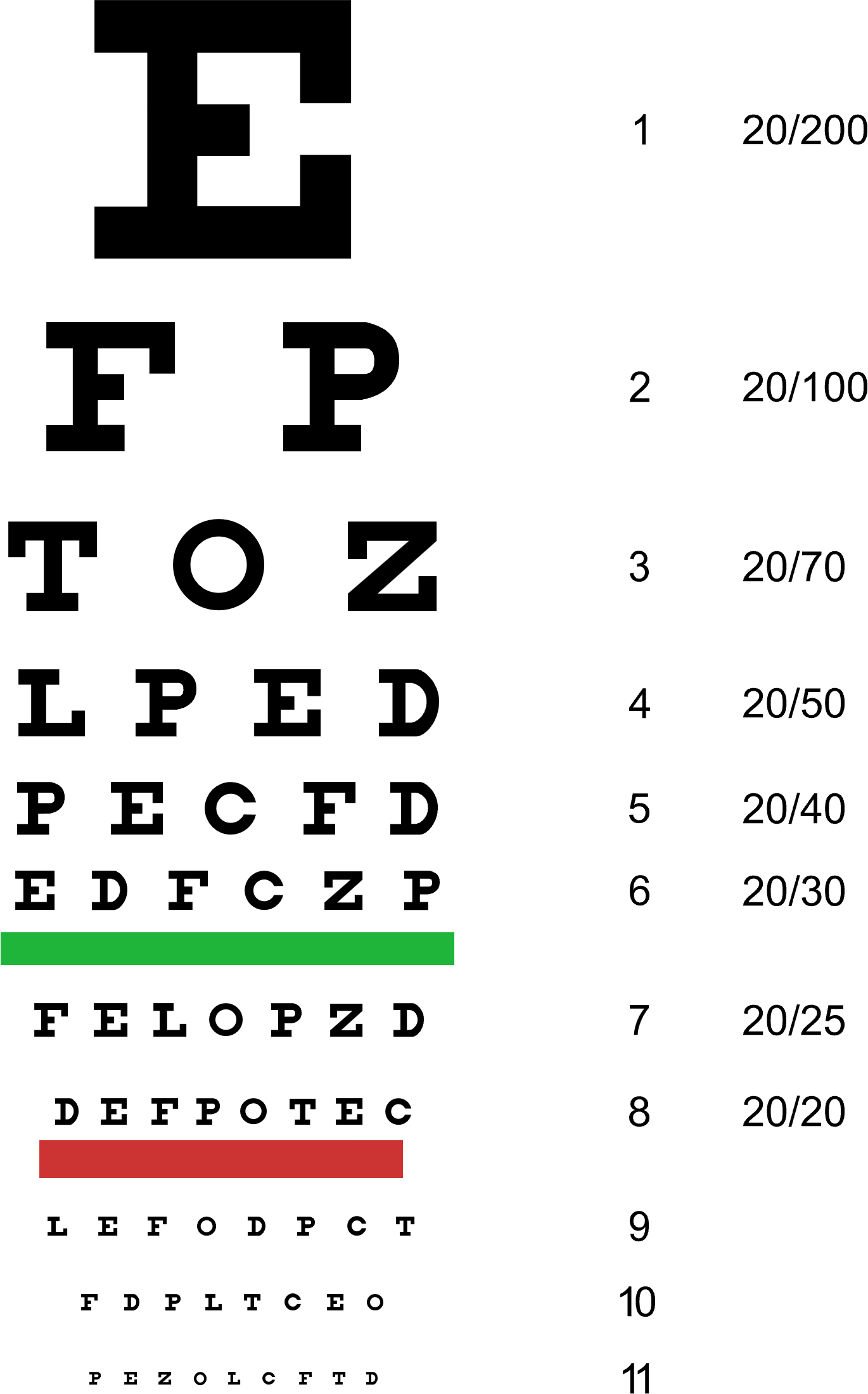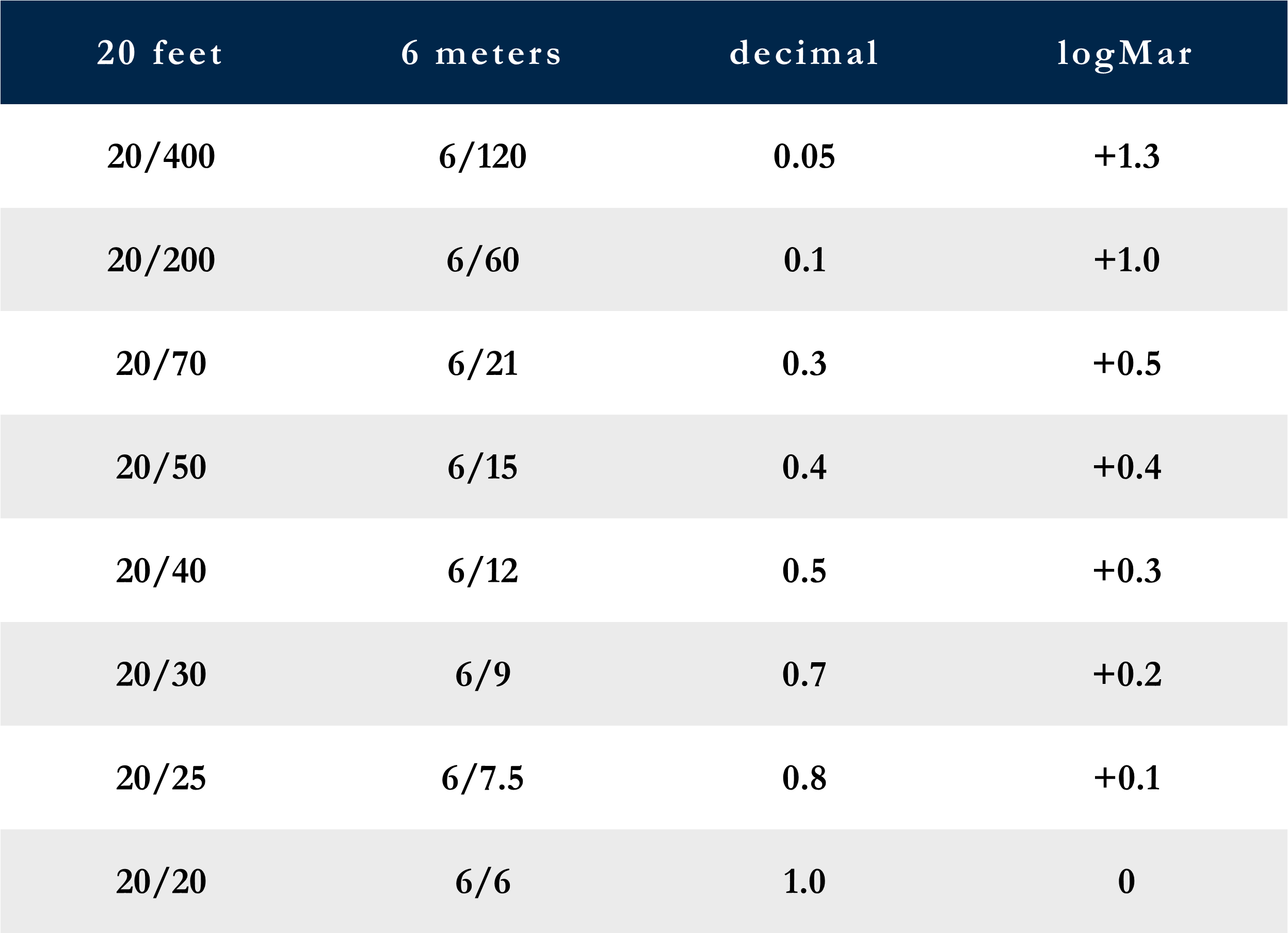What is 20/20?
Anytime you see an eye doctor for your eyeglass prescription, you will be asked to read letters from a distance to test how well you can see. You may have even heard your eye doctor say you have 20/20, 6/6, or 1.0 vision depending on which part of the world you are in; those numbers represent your visual acuity.
This post will explain what “20/20” means, how it relates to visual acuity, and how we can test the visual acuity of young children.
Meet Dr. Snellen & the Snellen Chart
The visual acuity chart you usually see in an eye doctor’s office is also referred to as the “Snellen chart”, created by 19th-century Dutch ophthalmologist Hermann Snellen (1834–1908). The Snellen chart is just one of many charts that can be used, but it is the most common. To measure visual acuity using the Snellen chart, you must sit or stand 6 meters or 20 feet away from the chart, cover one eye, and then read the letters of each row, beginning from the top. The smallest row you can read indicates your visual acuity in the open eye.
Jeff Dahl, CC BY-SA 3.0, via Wikimedia Commons
The Meaning of 20/20
“20/20” corresponds to a specific letter size that can be recognized by a hypothetical “average” person standing 20 feet away from the visual acuity chart. 20 feet is approximately 6 meters, that’s why some countries will use the notion of 6/6 instead of 20/20 to represent visual acuity; other countries may also use decimals (i.e., 1.0, or 0.5), and research institutions may use something called logMar (see the chart for the conversions).
The sizing of Snellen chart letters are geometrically consistent, meaning if someone is 20/200, their visual acuity is 10 times worse than someone who is 20/20. If you have 20/200 vision, you can recognize 20/200 sized letters when 20 feet away, while someone with 20/20 vision can stand 10 times the distance, or 200 feet away, and still recognize the 20/200 letter sizes!
Is 20/20 Perfect Vision?
No, 20/20 is what an average person can see at 20 feet. Some people will have visual acuity above or below this average, for example, many people have 20/15 or even 20/10 visual acuity.
It is important to point out that visual acuity only represents one of the many aspects of our visual system; our visual skills also include peripheral vision, depth perception, accommodation (the ability to focus on objects at various distances), contrast sensitivity, colour vision, and more. Because of the many other aspects of our visual system, someone with 20/20 visual acuity may not always have comfortable vision, while someone with 20/30 visual acuity may be happy.
My Kids Haven’t Learned Their Letters, Can They do an Eye Exam?
According to the Canadian Association of Optometry, a child should have their first eye exam as early as 6-9 months of age, and no, we don’t expect your infant, toddler, or pre-school-aged child to recognize letters! While the Snellen acuity chart is commonly used, it is not the only visual acuity chart. There are various child visual acuity charts such as the Allen Chart or the Lea Symbol Chart that present different shapes to children.
For infants and toddlers that are too young to consistently recognize shapes, there are also other techniques such as preferential looking to test the children’s visual acuity. Some examples are Teller Acuity Chart or the Lea Paddle.
Besides, the goal for an infant and/or child eye exam isn’t really to make sure they can read tiny letters, but to make sure that their eyes are developing normally. We will direct their attention with toys while assessing their vision and eye health. An infant doesn’t need to talk, they get to have fun with toys while we look at their eyes. So don’t worry about the letters and bring your children in for an eye exam!
Individuals with Communication Difficulties
Aside from children who may not have learned their letters, eye doctors can also work with patients who have communication difficulties, i.e. children on the autism spectrum, or senior patients with Alzheimer’s. Eye doctors can get a lot of valuable feedback even by observing the patient’s eye movements and behaviour, without the patient needing to talk.
Fun Fact
The word “acuity” stems from the Latin word acuitas, which means sharpness, so when eye doctors measure your visual acuity, we are measuring your visual sharpness.
References
Azzam, D., & Ronquillo, Y. (2022). Snellen Chart. In StatPearls. StatPearls Publishing.
National Institute of Standards and Technology (NIST), Commerce Department. (1982, December 31). Size of Letters Required for Visibility as a Function of Viewing Distance and Observer Visual Acuity. [Government]. Commerce Department. https://www.govinfo.gov/app/details/GOVPUB-C13-ff8dc22d75e66f29ebdb2bb2085ee683
The Eye Exam. The Canadian Association of Optometrists. (2022). Retrieved December 27, 2022 from https://opto.ca/eye-health-library/eye-exam.




